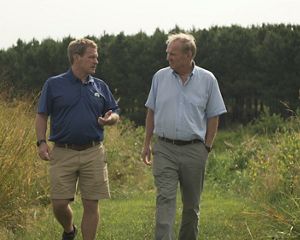
A Healthy, Profitable Future Starts with a Conversation
When farmers and landowners work together to improve soil health, everyone profits and everyone thrives.
With rich soils and abundant freshwater, Midwest farms are among the most productive lands on earth. More than 60 percent of the region’s farmlands are rented lands, and for generations, these farms have run on trust and handshakes between farmers and landowners. This trust remains the farm’s greatest untapped resource. All it takes to unleash its potential is a conversation.
Most farmers and landlords have long-standing, deep relationships—with trust earned and seasoned through the challenges of unpredictable weather, market swings and the shared commitment to run a productive and profitable farm. Yet formal collaboration between farmers and landlords around the use of soil health and nutrient management practices on rented farmland acres remains low. Many conservation practices require lengthy implementation periods and incur additional capital costs before their economic and conservation benefits can be achieved—meaning landowner and farmer collaboration is essential.
Together, landowners and farmers can collaborate to adopt conservation agriculture practices that not only improve their respective bottom lines, but ensure a healthier landscape for growing our food, safeguarding our waterways and creating a sustainable food system for a growing world.
Everyone profits. Everyone thrives. It all starts with a conversation.
Resources for Landowners and Farmers
The resources here can help farmers and landowners start conversations and begin collaborations about the benefits of conservation agriculture.
-
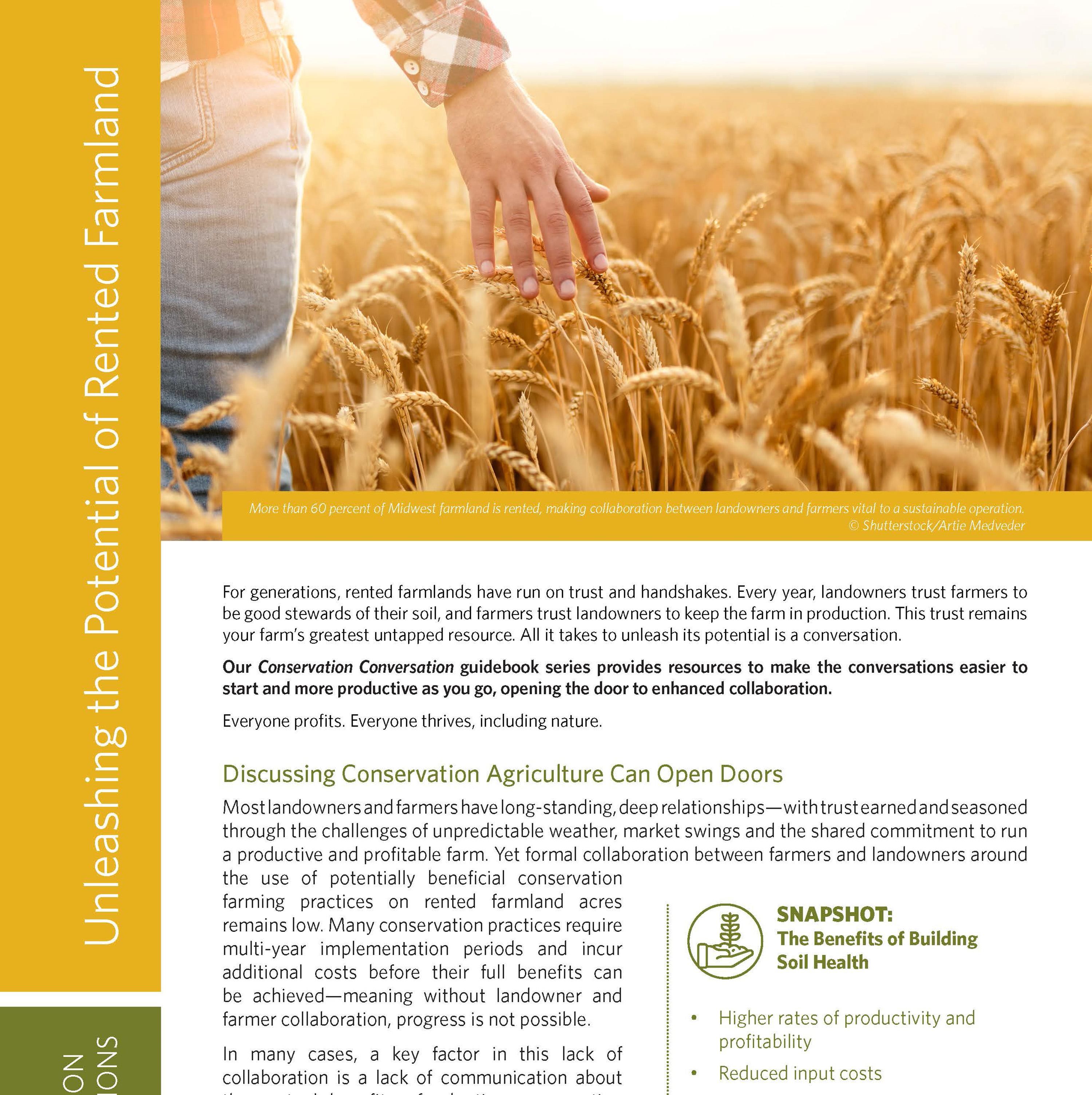
Unleashing the Potential of Rented Farmland
Together landowners and farmers can reap the financial and sustainability rewards of conservation. All it takes is starting the discussion. Learn About Conservation Conversations
-
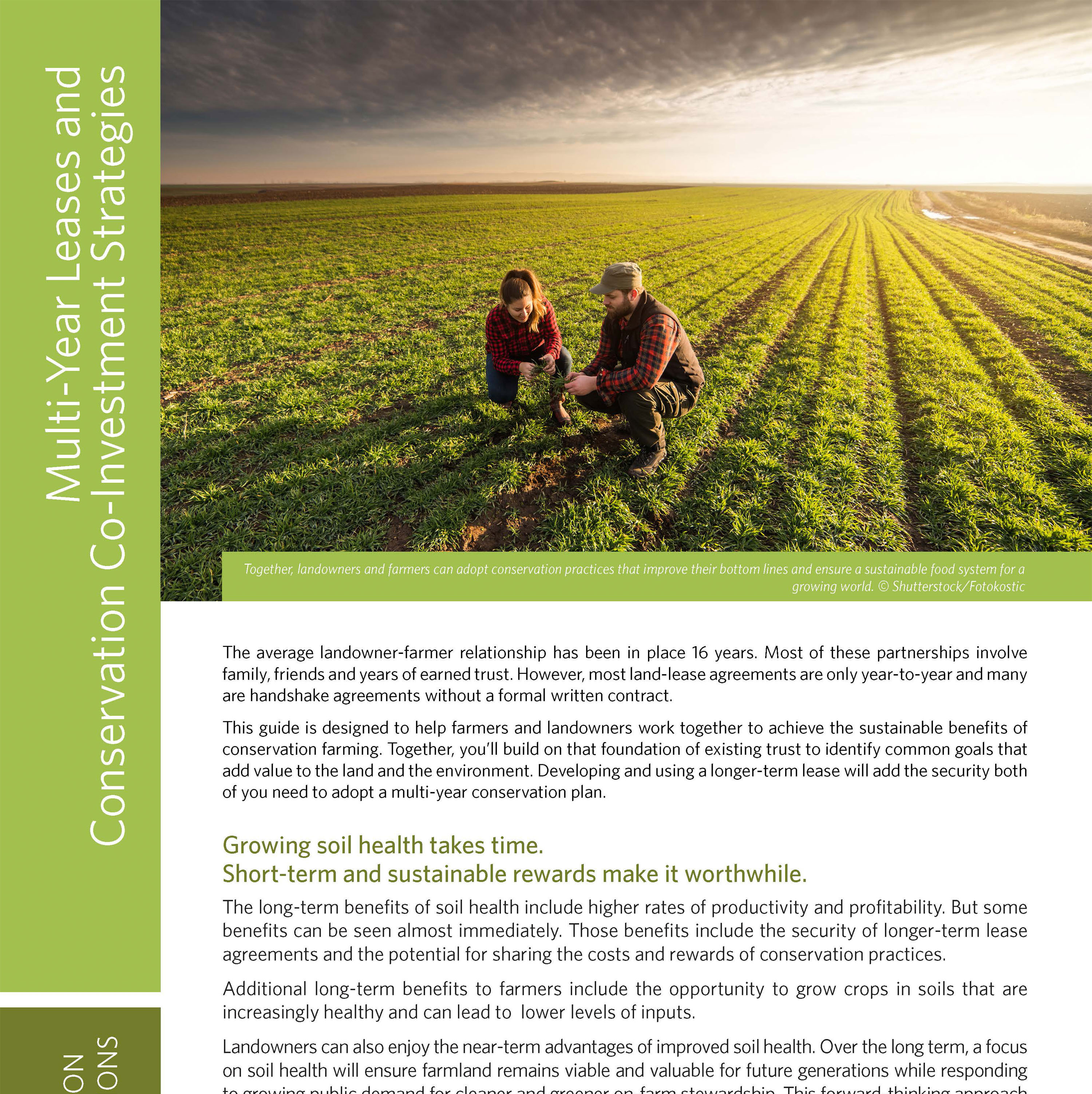
Multi-Year Leases and Conservation Co-Investment Strategies
Landowners and farmers are co-investors in farmland. Working together on conservation strategies can benefit both parties. Learn About Co-Investing
-

Engaging Your Landowner in Conservation Activities
Learn the key talking points for starting your conversation about what it takes to implement conservation practices. Learn How to Find Common Ground in Conservation
-
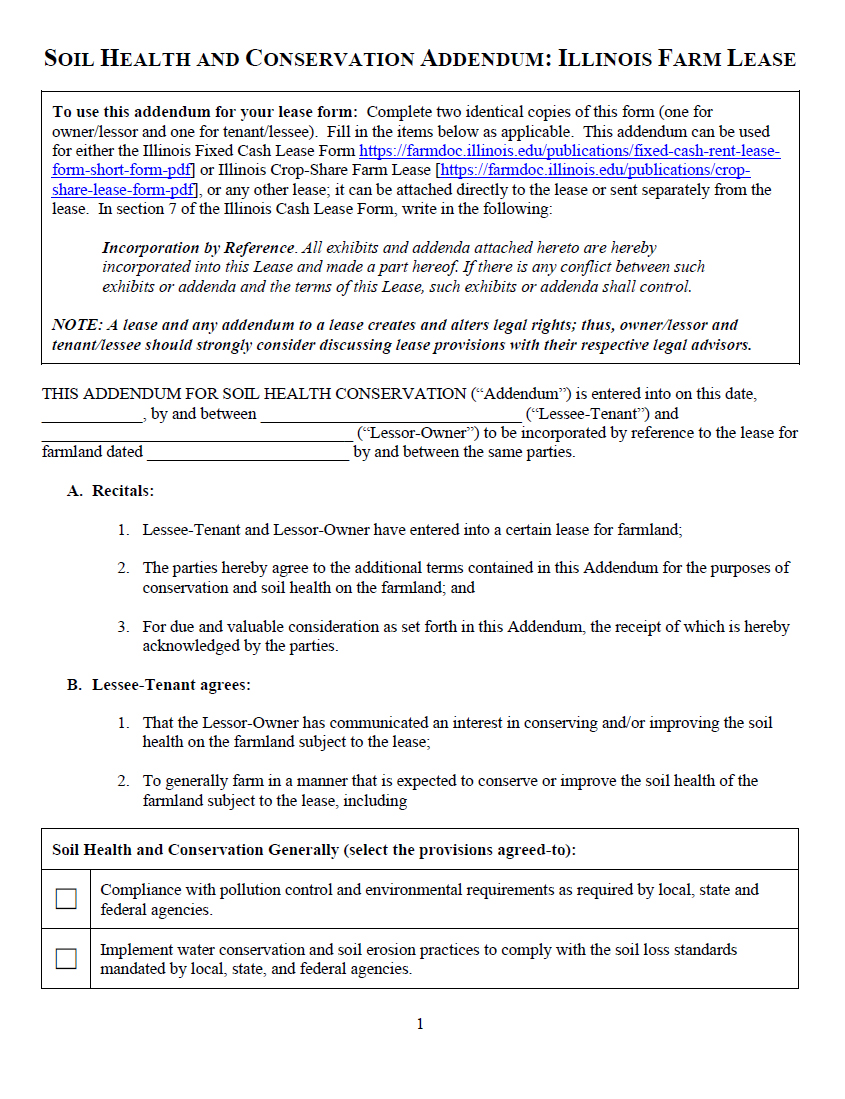
Soil Health & Conservation Addendum
Improving soil health benefits farmers and landowners. This addendum from the Univ. of Illinois addresses incorporating specific conservation practices into a lease agreement and can be used as a guide to build an agreement with your landlord. Download the Soil Health & Conservation Addendum
-

Nutrient Management Addendum
The 4Rs of nutrient management maximize plant uptake and minimize field losses. This information from the University of Illinois can be used as a guide to incorporate a soil nutrient management plan into your lease agreement. Download the Nutrient Management Addendum
-
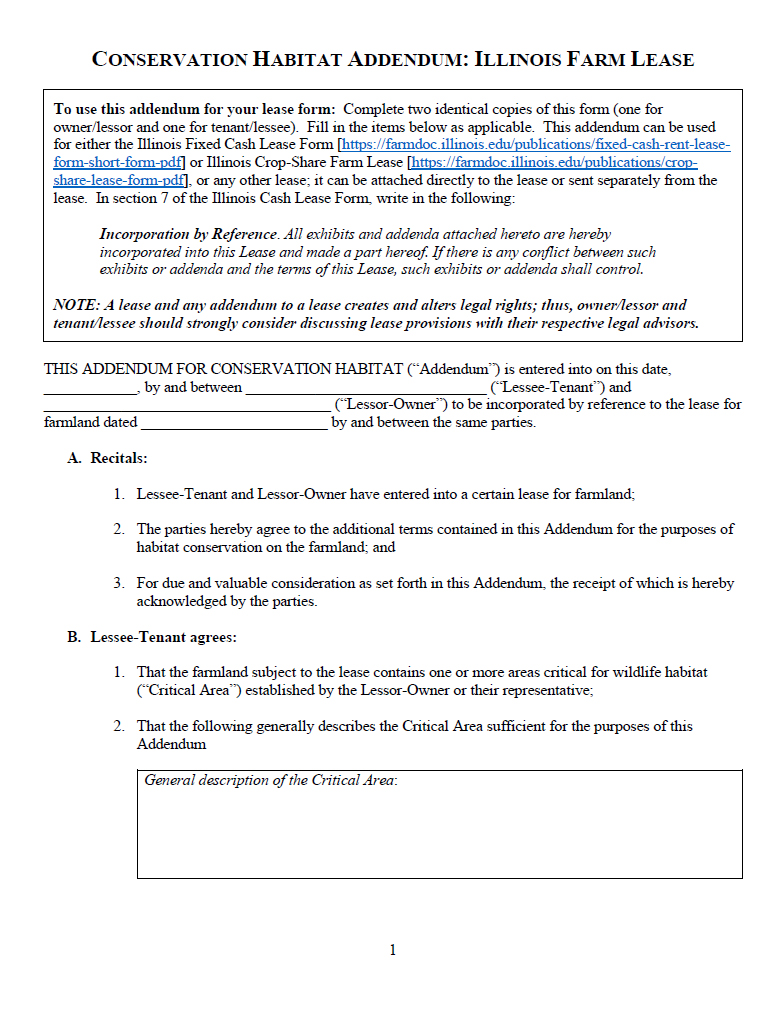
Conservation Habitat Addendum
If enhancing wildlife habitat is a goal of your landlord, this information from the University of Illinois Extension can be used as a guide to develop an agreement on rented land. Download the Conservation Habitat Addendum
-

Cover Crop Lease Insertion
Cover crops are an important consideration to improve soil health. Learn how to incorporate them in a lease agreement with this resource from The Nature Conservancy. Download the Cover Crop Lease Insertion

